Programmed and Projected by Julian Antos, Becca Hall, Rebecca Lyon, Kyle Westphal, and Cameron Worden.
Additional capsules by Julia Reinitz and Gabriel Wallace. Volunteer: Jiayi Chen
Our screenings are held at multiple venues around Chicago, including:
- The Auditorium at Northeastern Illinois University (Building E) – 3701 W. Bryn Mawr Ave., Chicago, IL 60625
Tickets: General Admission: $7 • NEIU Students: $3
- The Music Box Theatre – 3733 N. Southport Ave., Chicago, IL 60613
Tickets: $10 – $11
- Chicago Filmmakers – 5720 N Ridge Ave., Chicago, IL 60660
Add CFS screenings to your Google Calendar!
Wednesday, May 2 @ 7:30 PM / NEIU
DODSWORTH
Directed by William Wyler • 1936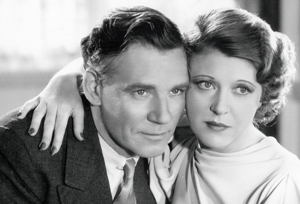
Walter Huston gets to play the nicest guy ever (for once) in this adaptation of the Sinclair Lewis novel of the same name. After the titular industrialist retires from the auto industry, Dodsworth and his much younger wife (Ruth Chatterton) take a well deserved vacation to Europe, where their marriage quickly falls apart. Mary Astor, radiant as ever, befriends and falls in love with the soon-to-be divorcé, while Chatterton searches for a replacement husband. A delicate and mature film about marriage on the rocks that pushed the Hays Code to the limit with allusions of infidelity, Dodsworth quite naturally underperformed at the box office on its original release: “…nobody wanted to see it. In droves,” said producer Samuel Goldwyn. The film was, however, immediately beloved by critics and continues to be thought of as one of the best films of the thirties. Per Dave Kehr, “By far the most sensitive, restrained, and effective piece of direction Wyler ever turned in, the film achieves a measure of greatness through the dignity and depth of Huston’s superb interpretation of the plainspoken Yankee.” (JA)
101 min • Samuel Goldwyn • 35mm from Park Circus
Film Stock: Kodak B+W Lab: Fotokem (Print Struck 2010)
Short: “Yankee Doodle Goes to Town” (Jacques Tourneur, 1938) – 25 min – 16mm
Saturday, May 5 @ 11:30 AM / Music Box Theatre / Live Organ Accompaniment from Dennis Scott
WOMAN OF TOKYO
Directed by Yasujiro Ozu • 1933
In Japanese with English subtitles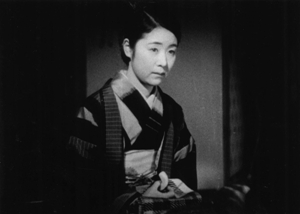
Although the Japanese film industry had been producing sound movies since the dawn of the decade, Yasujiro Ozu continued to turn out silent features until 1936. Ozu’s silent output was not a dead end, but a site of fervent experimentation and refinement, as demonstrated by Woman of Tokyo, a masterful miniature that applies the lessons of Ernst Lubitsch’s narrative shorthand to a new milieu. (A scene from Lubitsch’s If I Had a Million segment is excerpted at length, and the screenplay is credited to one “Ernst Schwartz”—an Ozu pseudonym.) Two pairs of adult siblings attempt to eke out a living in Tokyo: a university student (Ureo Egawa) shares an apartment with the sister (Yoshiko Okada) who pays for his education while his girlfriend (Mizoguchi regular Kinuyo Tanaka) lives with her policeman brother (Shin’yô Nara). When Nara learns that Okada may be supplementing her typist income with disreputable side gigs, the cheerful cop ruins one life and another in turn. A staunchly feminist tragedy that envisions gender roles as pernicious traps for men and women alike, Woman of Tokyo plays like a melodrama refracted through a prism of avant-garde technique. Upon the belated American premiere in 1982, critic J. Hoberman cited Woman of Tokyo as the year’s best film. Co-presented with Chicago Critics Film Festival (KW)
47 min • Shôchiku Eiga • 35mm from Janus Films
Film Stock: Fuji
Short: A Straightforward Boy [Fragment] (Yasujiro Ozu, 1929) – 14 min – 35mm
Wednesday, May 9 @ 7:30 PM / NEIU
MA AND PA KETTLE
Directed by Charles Lamont • 1949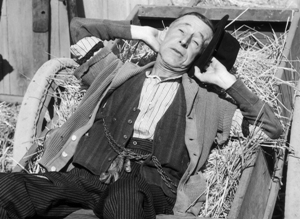
Nearly 50 years before television audiences gathered to have a good collective chuckle at the technologically challenged Ozzy Osbourne trying to work his new TV set on The Osbournes, there was the first Ma and Pa Kettle film, in which a loveable hillbilly family (Ma, Pa, their numerous children and farm animals) living in a dilapidated farmhouse in rural Washington move into a brand-new “house of the future” after Pa wins a slogan-writing contest for a tobacco company. Already on the verge of being evicted from their charming squalor, they move into the modern, mostly automated dream home only to be plagued by its state-of-the-art gadgets. Ma and Pa Kettle (Marjorie Main and Percy Kilbride) first graced the screen as supporting characters in The Egg and I playing neighbors to a newlywed couple (Claudette Colbert and Fred MacMurrary) trying to make a go at chicken farming. Universal subsequently launched a spin-off franchise of nine films about the Kettle clan that were so popular they helped pull the studio from the brink of bankruptcy. We doubt it will do the same for us, but we promise there will be hijinks, projectiles, and laughs more numerous than the Kettle kids, which is, well … a lot. (RL)
76 min • Universal-International • 35mm from Universal
Film Stock: AGFA
Cartoon: Porky Pig in “The Swooner Crooner” (Frank Tashlin, 1944) – 7 min – 16mm
Tuesday, May 15 @ 7:30 PM / NEIU
COOGAN’S BLUFF
Directed by Don Siegel • 1968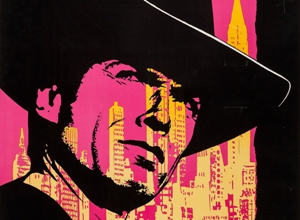
Established on the heels of his beloved trilogy of films with Sergio Leone, Clint Eastwood’s Malpaso Company provided the auteur-movie star with a space where he could work quickly and efficiently on projects that alternately reinforced and challenged his iconic screen presence. A highly effective action policier typical of early Malpaso product, Coogan’s Bluff was the first film to pair the actor with director Don Siegel, who would go on to direct Clint in four more indelible pictures and who would exert a considerable influence over Eastwood’s own directorial efforts. Eastwood stars as Arizona cowboy cop Walt Coogan, sent to the big city to extradite an acid-gobbling hippie gang leader charged with murder back West. In his quest to bring his man in and bed every woman half his age in New York, Coogan, ever the good libertarian, takes a fast and loose approach to “due process” and manages to alienate just about every person sucked into the chaos that surrounds him. As with any good Eastwood picture, the actor imbues his character with a nasty charm that’s wholly magnetic even as Coogan’s actions often appear far from heroic. Siegel, for his part, further proves his action bonafides with a handful of the greatest helicopter shots ever put to film and an absolute monster of a climatic motorcycle chase. (CW)
93 min. • The Malpaso Company • 35mm from Universal
Film Stock: Kodak 2383 (2008) Lab: Fotokem
Short: “The Beguiled: The Storyteller” (Clint Eastwood, 1971) – 12 min – 35mm
Tuesday, May 22 @ 7:30 PM / NEIU
BUCK AND THE PREACHER
Directed by Sidney Poitier • 1972
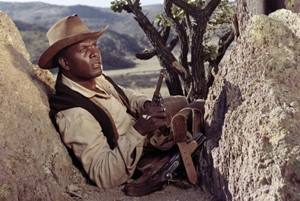 A very loose Western adaptation of the story of Moses leading the Israelites out of Egypt, Buck and the Preacher stars Sidney Poitier as a former soldier leading black wagon trains to unsettled territories in Kansas with his wife Ruby Dee and the very squirrely Harry Belafonte. Joseph Sargent was originally slated to direct this Columbia Pictures/Belafonte Enterprises co-production, but was fired by Harry Belafonte and replaced by Poitier shortly after the production began filming in Mexico. The first Western directed by an African American for a major studio, Buck and the Preacher is most decidedly not a blaxploitation film, though it is one of the only Westerns to seriously portray the role of African Americans in the West, and a great revisionist Western in its own right. Reflecting the delicate line that Poitier’s film had to walk in the marketplace, the New York Times sought to reassure genre fanatics that Buck was a “loose, amiable, post‐Civil War Western with a firm though not especially severe Black Conscience. The film is aware of contemporary black issues but its soul is on the plains once ridden by Tom Mix, whom Poitier, astride his galloping horse, his jaw set, somehow resembles in the majestic traveling shots given him by the director.” With music by jazz legend Benny Carter and the most intense harmonica playing you’ve ever heard over opening credits by Sonny Terry. (JA)
A very loose Western adaptation of the story of Moses leading the Israelites out of Egypt, Buck and the Preacher stars Sidney Poitier as a former soldier leading black wagon trains to unsettled territories in Kansas with his wife Ruby Dee and the very squirrely Harry Belafonte. Joseph Sargent was originally slated to direct this Columbia Pictures/Belafonte Enterprises co-production, but was fired by Harry Belafonte and replaced by Poitier shortly after the production began filming in Mexico. The first Western directed by an African American for a major studio, Buck and the Preacher is most decidedly not a blaxploitation film, though it is one of the only Westerns to seriously portray the role of African Americans in the West, and a great revisionist Western in its own right. Reflecting the delicate line that Poitier’s film had to walk in the marketplace, the New York Times sought to reassure genre fanatics that Buck was a “loose, amiable, post‐Civil War Western with a firm though not especially severe Black Conscience. The film is aware of contemporary black issues but its soul is on the plains once ridden by Tom Mix, whom Poitier, astride his galloping horse, his jaw set, somehow resembles in the majestic traveling shots given him by the director.” With music by jazz legend Benny Carter and the most intense harmonica playing you’ve ever heard over opening credits by Sonny Terry. (JA)
102 min • Columbia Pictures • 35mm from Sony Pictures Repertory
Film Stock: Kodak 2383 (1999)
Short: Production Featurette for Duel at Diablo (Ralph Nelson, 1966) – 7 min – 16mm
Monday, May 28 @ 6:00 PM / Music Box
70mm SHORTS SHOWCASE, VOL. 2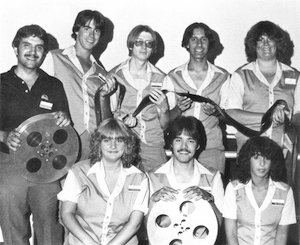
The Cinema-180 Adventure Theater sounds like a truly awful place to see a movie. In between rides at Great Adventure Theme Parks, audience members would shuffle in to an enormous screening room with a concrete floor covered in indoor/outdoor carpet, staring at a 180-degree curved screen held in place by suction for a neck-straining eleven minutes. Much like the outdoor screenings offered by well meaning but technologically inept park districts, the screen would deflate at the end of the night, sagging mightily. We’ll be creating this experience, though regrettably under much better technical circumstances, when we screen the 1983 ride film International Thrill Show as part of our second ever 70mm shorts program at the Music Box. Back by popular demand, we’ve combed the world for films that use 70mm’s wide, clear frame to enchant, delight, and terrify. Also screening: A Year Along the Abandoned Road (Morten Skallerud, 1991, 70mm DTS from Panavision), a time lapse film shot over the course of one year in Børfjord, Norway; Tanakh Bibelen al-Quran (Ole Mads Sirks Vevle, 2007, 70mm DTS from Norwegian Film Institute) a film of every page of the Bible, Quran, and Tanakh shot rapidly in sequence; a condensed version of the 1958 Russian Travelogue Great is My Country (70mm with magnetic sound from Chicago Film Society Collections); plus rare clips, trailers, and more. Buckle up for “an action packed sensory movie experience!”
Approx run time 90 min
Wednesday, May 30 @ 7:30 PM / NEIU
GABBEH
Directed by Mohsen Makhmalbaf • 1996
In Farsi with English subtitles
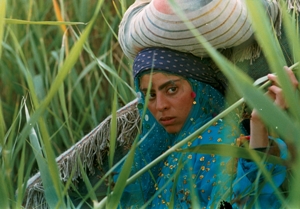 The massively vital and influential Tehrani director Mohsen Makhmalbaf, perhaps best known to Western audiences for playing himself in Abbas Kiarostami’s Close-Up, scored an unexpected art house hit in 1997 with this strange and beautiful fable which defies easy (or even complex) categorization. Is Gabbeh a rich, circular, endlessly fertile film-poem slyly masquerading as a simple folk tale? Or is it an explosive meditation on color, texture, and the act of seeing, disguised as an easygoing narrative that pushes us toward a gentle reimagining of film language? It’s all of these things, and perhaps none of them as well. The title refers to a style of hand-woven, hand-dyed carpet made by rural nomads of southern Iran, the design of which often depicts an abstracted narrative. We first glimpse the eponymous carpet being washed in a clear stream; soon, the submerged gabbeh becomes Gabbeh, a mysterious young woman whose story the rug (and the film) will seem to depict. This soft transformation is just the first of many small, heart-stopping moments of ecstatic poetry. Those who surrender to the film’s quiet authority will be rewarded: the central tale of Gabbeh’s reckless desire to escape her family and elope with a distant lupine figure is deftly and powerfully interwoven with riveting episodes showing her tribe’s rug-making process, an unforgettable dyeing lesson, and the occasional unexplained mystical digression. (GW)
The massively vital and influential Tehrani director Mohsen Makhmalbaf, perhaps best known to Western audiences for playing himself in Abbas Kiarostami’s Close-Up, scored an unexpected art house hit in 1997 with this strange and beautiful fable which defies easy (or even complex) categorization. Is Gabbeh a rich, circular, endlessly fertile film-poem slyly masquerading as a simple folk tale? Or is it an explosive meditation on color, texture, and the act of seeing, disguised as an easygoing narrative that pushes us toward a gentle reimagining of film language? It’s all of these things, and perhaps none of them as well. The title refers to a style of hand-woven, hand-dyed carpet made by rural nomads of southern Iran, the design of which often depicts an abstracted narrative. We first glimpse the eponymous carpet being washed in a clear stream; soon, the submerged gabbeh becomes Gabbeh, a mysterious young woman whose story the rug (and the film) will seem to depict. This soft transformation is just the first of many small, heart-stopping moments of ecstatic poetry. Those who surrender to the film’s quiet authority will be rewarded: the central tale of Gabbeh’s reckless desire to escape her family and elope with a distant lupine figure is deftly and powerfully interwoven with riveting episodes showing her tribe’s rug-making process, an unforgettable dyeing lesson, and the occasional unexplained mystical digression. (GW)
75 min • MK2 Productions • 35mm from Chicago Film Society Collections, permission Arrow Films
Short: “The Red Thread” (Larry Gottheim, 1987) – 17 min – 16mm from Canyon Cinema
Tuesday, June 5 @ 7:30 PM / NEIU
HANS CHRISTIAN ANDERSEN
Directed by Charles Vidor • 1952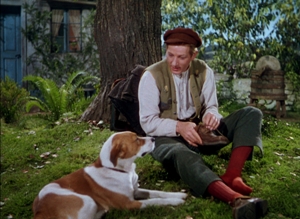
Danny Kaye, here at his very best, plays Hans Christian Andersen in this not-biopic, a gorgeous Technicolor musical which has next to no relation to the much-stranger-in-real-life man behind The Ugly Duckling and The Red Shoes. Exiled from his hometown of Odense, Denmark, for corrupting the minds of school children with fables, Andersen and his assistant cobbler Peter leave for Copenhagen, quickly driven to distraction by the French Ballerina Zizi Jeanmaire. Babyface Farley Granger plays the brutish ballet producer, though he doesn’t turn out to be such a bad guy. A pet project of producer Samuel Goldwyn, the film was in pre-production for fourteen years and went through sixteen different screenplays before it was finally produced. The trailer boasted that Goldwyn had never spent so many millions, and it even caused an international dispute when the people of Denmark feared their hero was being disgraced by this American mega-production. (Kaye himself was sent to smooth things over.) Happily, the money shows up on screen: beautiful, lavish sets and costumes, a delightful and luxurious twenty-minute ballet sequence, and eight perpetually hummable musical numbers, all in glorious Technicolor. (JA)
112 min • Samuel Goldwyn • 35mm IB Technicolor from private collections, permission Park Circus
Film Stock: Kodak (1952, IB Technicolor)
Short: “Alice in Wonderland: Act II” (Ruth Page, 1977) – 7 min – 16mm from Chicago Film Archives
Saturday, June 16 @ 11:30 AM / Music Box Theatre / Live Organ Accompaniment from Dennis Scott
FEEL MY PULSE
Directed by Gregory La Cava • 1928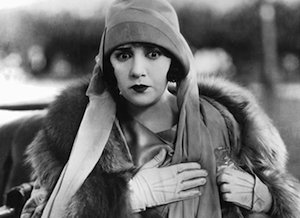
Bebe Daniels began her acting career at the age of seven; by fourteen, she was a frequent co-star of Harold Lloyd, with whom she made dozens of comedies under the “Lonesome Luke” banner. Towards the end of the silent era, Daniels had become a star and accomplished comedienne in her own right, though many of her most intriguing and subversive films from this period (e.g., She’s a Sheik) are now presumed lost. Among the handful that survive, Feel My Pulse is a rollicking comedy that offers Daniels a wonderful showcase for her knockabout antics and subtler character work. Directed by former cartoonist Gregory La Cava, who also fashioned a surprisingly effective silent comedian out of W.C. Fields in So’s Your Old Man and Running Wild, Feel My Pulse follows hypochondriac heiress Daniels to an island sanitarium where everything is not as it seems. The doctor (William Powell) is really a bootlegger in disguise and all the attendants, save for undercover reporter Richard Arlen, are lieutenants in his rum-running army. The kind of witty and unpretentious comedy at which Paramount excelled, Feel My Pulse never aspired to be anything more than an evening’s entertainment — but after seeing it, you’ll never look at surgical equipment the same way again. (KW)
63 min • Paramount Pictures • 35mm from Library of Congress
Short: “The Hasher’s Delirium” (Émile Cohl, 1910) – 5 min – 16mm
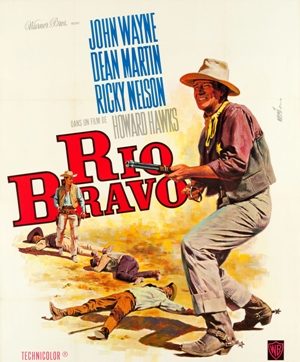
Monday, June 18 @ 7:00 PM / Music Box Theatre
RIO BRAVO
Directed by Howard Hawks • 1959
What is a Western? If you come to the genre expecting expansive natural landscapes, daring feats of horsemanship, and a deep engagement with the trailways of American history, then Rio Bravo falls flat on its face like a hooch-guzzling saloon dweller. If you want your Westerns to be about relationships, honor, purple light in the canyon, and the inexhaustibly fine line between “good” and “good enough,” then Rio Bravo is just about perfect. Conceived for the narrowly parochial purpose of rebutting the whiny indecisiveness of High Noon, Howard Hawks and his screenwriters Jules Furthman and Leigh Brackett crafted a response so rich in human detail as to make the casus belli irrelevant. John Wayne stars as John T. Chance, a small town sheriff who must keep the peace with a task force that embarrasses his conservative sense of professionalism: a drunken deputy (Dean Martin), a guitar-slinging kid (dreamy Ricky Nelson), a game-legged oldster (dreamy Walter Brennan), a fiercely independent woman (stunning Angie Dickinson), and a loquacious hotel-keeper (Pedro Gonzalez-Gonzalez). Make no mistake: Rio Bravo is an ambling, seemingly shapeless movie that thinks nothing of stopping the action for a song or two, but the screenplay is a genuine model of economy and an endless fount of arid wisdom. (Sample dialogue from Wayne: “I’d say he’s so good, he doesn’t feel he has to prove it.”) Photographed in fade-prone Eastmancolor but originally released in Technicolor prints, Rio Bravo has been cursed in later years with substandard copies that look about as appealing as Dean Martin’s stubbled chin. We are proud to present one of our favorite films in a sparkling IB Technicolor print. (KW)
141 min • Warner Bros. • 35mm IB Tech from private collections, permission Warner Bros.
Preceded by: ’50s Westerns Trailer Reel
Wednesday, June 20 @ 7:30 PM / NEIU
THE HAPPY TIME
Directed by Richard Fleischer • 1952
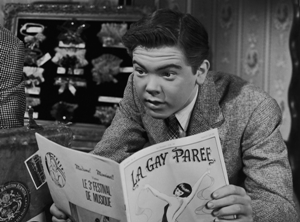 While waiting over a year for mercurial RKO head Howard Hughes to sign off on his B-picture breakthrough, The Narrow Margin, journeyman filmmaker Richard Fleischer anxiously dreamt of moving up a rung or two in the Hollywood racket. The opportunity finally came when Stanley Kramer offered Fleischer the chance to direct The Happy Time for his eponymous production company at Columbia — a project that Fleischer giddily described as “no melodrama, no murders, no evil wooden puppets, but people, warm, human, alive, and funny.” Based on a Robert Fontaine novel that had already been imported to Broadway by Rodgers and Hammerstein (oddly, not as a musical — that would have to wait for the Kander & Ebb version of 1968), The Happy Time is a curious effort to bring together the sentimental coming-of-age story and the ever-so-slightly-blue sex comedy. (The original tagline: “Finally a Film on That Touchy Titillating Topic!”) Disney mainstay Bobby Driscoll stars as Robert ‘Bibi’ Bonard, a French-Canadian kid growing up in Ottawa in the mid-1920s. Surrounded by a family of aspiring roués (uncle Louis Jourdan, “the Casanova of Canada”), aging carousers (grandpère Marcel Dalio), and unaccountably level-headed folks (father Charles Boyer), Bibi develops a crush on magician’s-assistant-turned-housemaid Mignonette (Linda Christian) and learns to stick up for himself. (KW)
While waiting over a year for mercurial RKO head Howard Hughes to sign off on his B-picture breakthrough, The Narrow Margin, journeyman filmmaker Richard Fleischer anxiously dreamt of moving up a rung or two in the Hollywood racket. The opportunity finally came when Stanley Kramer offered Fleischer the chance to direct The Happy Time for his eponymous production company at Columbia — a project that Fleischer giddily described as “no melodrama, no murders, no evil wooden puppets, but people, warm, human, alive, and funny.” Based on a Robert Fontaine novel that had already been imported to Broadway by Rodgers and Hammerstein (oddly, not as a musical — that would have to wait for the Kander & Ebb version of 1968), The Happy Time is a curious effort to bring together the sentimental coming-of-age story and the ever-so-slightly-blue sex comedy. (The original tagline: “Finally a Film on That Touchy Titillating Topic!”) Disney mainstay Bobby Driscoll stars as Robert ‘Bibi’ Bonard, a French-Canadian kid growing up in Ottawa in the mid-1920s. Surrounded by a family of aspiring roués (uncle Louis Jourdan, “the Casanova of Canada”), aging carousers (grandpère Marcel Dalio), and unaccountably level-headed folks (father Charles Boyer), Bibi develops a crush on magician’s-assistant-turned-housemaid Mignonette (Linda Christian) and learns to stick up for himself. (KW)
94 min • Stanley Kramer Productions • 35mm from Sony Pictures Repertory
Film Stock: Kodak (2001) Lab: Cinetech
Short: “Your Thrift Habits” (Coronet Films, 1948) – 11 min – 16mm
Tuesday, June 26 @ 7:30 PM / NEIU
DOUBLE SUICIDE
Directed by Masahiro Shinoda • 1969
In Japanese with English subtitles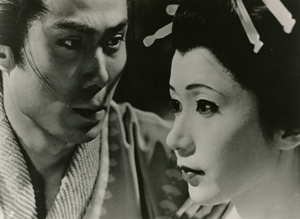
Forbidden love between a married paper merchant (Kichiemon Nakamura) and a courtesan (Shima Iwashita) moves inevitably towards tragedy and annihilation in this startling adaptation of a famous 1721 bunraku (puppet drama) from Japan’s foremost playwright Monzaemon Chikamatsu. (When Double Suicide opened in New York concurrently with Kenji Mizoguchi’s more classically mounted Chikamatsu adaptation, The Crucified Lovers, The New York Times celebrated the unlikely development, observing that this 18th century legend had become “like Shakespeare, like Neil Simon, one of the better represented dramatists in the city … Unlike Neil Simon, his mode is tragedy.”) An early production of the Art Theatre Guild, the ribald studio that would incubate projects by such Japanese New Wave stalwarts as Shōhei Imamura, Nagisa Oshima, and Toshio Matsumoto, Double Suicide is anything but a staid and reverent treatment of a classic. In translating the story to cinema, Masahiro Shinoda (Pale Flower, Silence) achieves radical ends by affirming its theatrical roots, mixing the story proper with footage of puppets and sets and stagehands, effectively kicking and stomping across the fourth wall. With music by Toru Takemitsu, who also takes his first and only screenwriting credit. (KW)
104 min • Art Theatre Guild • 35mm from Janus
Film Stock: Kodak 2302 (2010)
Short: “Budulinek and the Little Foxes” (Anna Vesela and Vaclav Zykmund, c. 1950) – 10 min – 35mm
Tuesday, July 3 @ 7:30 PM / NEIU
JEWEL ROBBERY
Directed by William Dieterle • 1932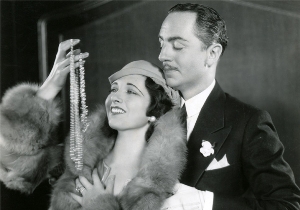
The zonked-out Viennese cousin of Trouble in Paradise, this pre-Code caper comedy from the versatile William Dieterle mines surprising emotional depth while exuding near-constant animalistic arousal. Bored baroness Kay Francis tolerates her stodgy husband as a periodic source of new diamonds and nothing more. One of their regular shopping trips comes to a stylish halt when debonair robber William Powell and his gang hold up the jewelry store. Abhorring the common title of ‘thief,’ Powell prefers a more sedate business transaction, playing a Strauss waltz while emptying the cabinets and dispensing marijuana cigarettes to his lucky victims. (“I’m opposed to the American school of banditry,” Powell quips. “I studied in Paris. You have to work harder but you do acquire a certain finesse that is missing from the stick-em-up and shoot-them-down school.”) No wonder Francis falls head over heels and gleefully accedes to being tied up. Another assembly line product from the Warner Bros. factory that plunders sets from other movies and runs barely over an hour, Jewel Robbery nonetheless manages to put forward a credible and full-bodied treatise on romantic love and sexual compatibility. (KW)
68 min • Warner Bros. • 35mm from Library of Congress, permission Swank
Film Stock: Kodak 2302 (2009) Lab: Library of Congress
Short: Laurel & Hardy in “Night Owls” (James Parrott, 1931) – 19 min – 16mm
Saturday, July 7 @ 8PM / Chicago Filmmakers
TWO FRIENDS
Directed by Jane Campion • 1986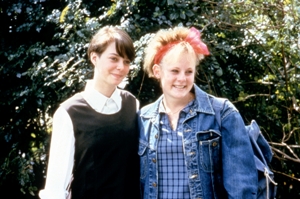
There’s a trepidation and thrill that always comes with watching the first feature of a beloved, accomplished director. What seeds of the artist’s lifelong obsessions can be spotted, what threads connect youthful beginnings to future masterpieces, or, worst-case scenario, will it be lame and embarrassing? Well, you’d be a fool to think Jane Campion ever made anything that would fall into the latter category — but if you are, never fear. Her debut feature made for Australian television in 1986 (three years before her theatrical debut, Sweetie) has a realist bent that she shies from in her later films, and a humanism she most certainly does not. Written by acclaimed Australian novelist Helen Garner, it’s a raw tale of adolescence and friendship told in reverse, charting the relationship between two 15-year-old girls from its painful dissolution to its hopeful beginning. Shot on 16mm and restored by Milestone Films in 1996 (when it finally received an American theatrical release), Two Friends is not just a curiosity from an auteur’s past, but a heartbreaking and gorgeous film through and through. (RL)
76 min • Australian Broadcasting Corp. • 16mm from Chicago Film Society Collections, permission Milestone Films
Short: “My Friend” (Gus van Sant, 1983) – 3 min – 16mm
Wednesday, July 11 @ 7:30 PM / NEIU
THE LANDLORD
Directed by Hal Ashby • 1970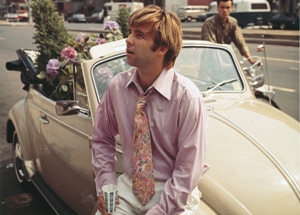
The first directorial credit for Academy Award-winning editor Hal Ashby, the arty, knotty, disquieting, and supremely funny comedy The Landlord proved from the start of the Harold and Maude auteur’s career that he was shooting for iconoclast status. Beau Bridges stars as the world’s handsomest slumlord, the youngest scion of a wealthy New York family grown sick of his penthouse fiefdom and itching to get into the booming business of gentrification. After purchasing an apartment building in Park Slope, Bridges finds his exclusively African American tenants difficult to shake as he gears up for a full scale eviction, ever more so after a hazy rent party and some ill-conceived bed-hopping entwine his and their lives inextricably. Penned by the brilliant and sadly overlooked filmmaker and playwright Bill Gunn, The Landlord proved to be too bitter a pill for most audiences to swallow in 1970, but Gunn’s charged, acerbic bon mots and take-no-prisoners approach to disassembling race and class relations have provided the film with an uneasy prescience. Featuring a murderers’ row of character actors including Pearl Bailey, Lou Gossett Jr., Susan Anspach, Will Mackenzie, and Academy Award-nominated MVP Lee Grant as Bridges’s racist, alcoholic mother. (CW)
Film Stock: Kodak 2383 (1999)
112 min. • United Artists • 35mm from Park Circus
Short: “Jasper in a Jam” (George Pal, 1946) – 8 min – 16mm
Monday, July 16 @ 7:00 PM / Music Box Theatre
URGH! A MUSIC WAR
Directed by Derek Burbidge • 1981
Co-presented with CHIRP 107.1 FM
Po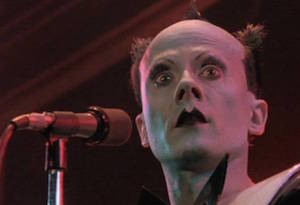 p quiz: who is the best new band of the 1980s? Gang of Four? Steel Pulse? The Go-Go’s? Surf Punks? Whatever your taste in under-the-radar sounds, Urgh! A Music War has you covered. Unabashed propaganda for the new wave of rock ‘n’ roll on the rise at the head of the Reagan era and soft promotion for “Creative Consultant” Miles Copeland’s I.R.S. Records (to which several bands featured in the film were signed), Urgh! captured, on 35mm and with multichannel sound, some of the most exciting musical acts of its era live in early, prime form. Keeping interstitial material to a minimum, Urgh! provided each of its 24 bands the space of a single song to leave an indelible impression before moving along. Showcasing in equal measure bands that were both on the precipice of breaking through as well as those who broke up or fell off the map almost immediately (anybody heard from The Alley Cats lately?), Urgh! has endured as a vital time capsule of its musical moment, presented in hi-fi with relatively little corporate intervention (save for the Dead Kennedys being booted from the soundtrack release for their inflammatory name). So please join us as we present, on the big screen (deep breath!), Devo, Echo & the Bunnymen, X, 999, Klaus Nomi, Au Pairs, Oingo Boingo, UB40, The Cramps, Gary Numan, Orchestral Manoeuvres in the Dark, XTC, and many more in the musical event of 1981. (CW)
p quiz: who is the best new band of the 1980s? Gang of Four? Steel Pulse? The Go-Go’s? Surf Punks? Whatever your taste in under-the-radar sounds, Urgh! A Music War has you covered. Unabashed propaganda for the new wave of rock ‘n’ roll on the rise at the head of the Reagan era and soft promotion for “Creative Consultant” Miles Copeland’s I.R.S. Records (to which several bands featured in the film were signed), Urgh! captured, on 35mm and with multichannel sound, some of the most exciting musical acts of its era live in early, prime form. Keeping interstitial material to a minimum, Urgh! provided each of its 24 bands the space of a single song to leave an indelible impression before moving along. Showcasing in equal measure bands that were both on the precipice of breaking through as well as those who broke up or fell off the map almost immediately (anybody heard from The Alley Cats lately?), Urgh! has endured as a vital time capsule of its musical moment, presented in hi-fi with relatively little corporate intervention (save for the Dead Kennedys being booted from the soundtrack release for their inflammatory name). So please join us as we present, on the big screen (deep breath!), Devo, Echo & the Bunnymen, X, 999, Klaus Nomi, Au Pairs, Oingo Boingo, UB40, The Cramps, Gary Numan, Orchestral Manoeuvres in the Dark, XTC, and many more in the musical event of 1981. (CW)
96 min. • Lorimar Productions • 35mm from Warner Bros.
Short: The Fleshtones in “Soul City” (M.Henry Jones, 1977) – 2 min – 35mm from Anthology Film Archives, Preserved by Anthology Film Archives with support from The Andy Warhol Foundation for the Visual Arts.
Wednesday, July 18 @ 7:30 PM / NEIU
THE EDGE OF THE WORLD
Directed by Michael Powell • 1937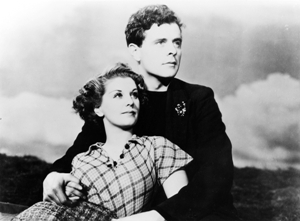
“When the Roman fleet first sailed round Britain they saw from the Orkneys a distant island, like a blue haze across a hundred miles of sea. They called it —ULTIMA THULE, The Edge of the World.” After apprenticing for Rex Ingram in the silent era, Michael Powell graduated to directing in the 1930s, turning out disposable “quota quickies,” so named because English law demanded a minimum annual number of domestic productions that were effectively audience-proof. The Edge of the World was Powell’s first opportunity to make a film of his choosing, a lovely and mystical film that fuses Scottish folklore, sternly tactile landscapes, and a low-key romance between Belle Chrystall and Niall MacGinnis. Set and shot on the isle of Foula, an isolated land grown barren, The Edge of the World is the kind of film where political disputes about evacuating to the mainland are settled by a race up the cliffside — a touch that would play like extravagant whimsy if not for the life-or-death stakes. As Roger Ebert observed, “The cliff-climbing scenes are especially dramatic, and, watching them, I realized that in most climbing scenes the climbers seem heroic. Here they seem tiny and endangered. It is the cliff that seems heroic, and that is probably the right way around.” (KW)
74 min • Rock Productions • 35mm from Milestone Films
Short: “An Airman’s Letter to His Mother” (Michael Powell, 1941) – 5 min – 35mm
Saturday, July 21 @ 11:30 AM / Music Box Theatre / Live Organ Accompaniment by Dennis Scott
THE LIGHTHOUSE KEEPERS (Gardiens de phare)
Directed by Jean Grémillon • 1929
Print Stock: Unmarked Black and White Polyester
French intertitles with English subtitles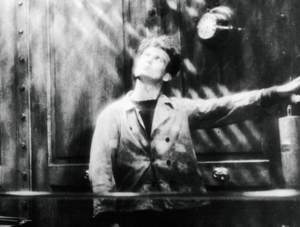
The director Jean Grémillon came to cinema through music; he became intoxicated with the form while accompanying silent films and his sense of rhythm remained intact when he put down the violin and took up the camera. Initially training as a documentary filmmaker and later dabbling in the avant-garde, Gremillon transitioned to narrative features at the very end of the silent era. His second, The Lighthouse Keepers, was shot in a studio, but retains the flavor of Grémillon’s native Brittany, where the story is set. A father (Paul Fromet) tends a remote lighthouse with his son (Geymond Vital), who longs to be reunited with his fiancée (Genica Athanasiou). Unbeknownst to the father, the son was recently bitten by a rabid dog and finds himself slowly going insane and turning violent. Adapted by Jacques Feyder from a one-act play from the infamous Théâtre du Grand-Guignol, The Lighthouse Keepers is notable for its expressionistic distortions and masterful editing, continually finding new ways to represent abnormal psychological realms. The French answer to The Cabinet of Dr. Caligari, The Lighthouse Keepers provides an unforgettable climax to the visual invention of the silent era. (KW)
73 min • Société des Films du Grand Guignol • 35mm from National Film Archive of Japan, courtesy of National Film Center, Tokyo
Short: Billie Bletcher in “The Fresh Lobster” (c. 1920s) – 7 min – 16mm
Wednesday, July 25 @ 7:30 PM / NEIU
THE LOCKET
Directed by John Brahm • 1946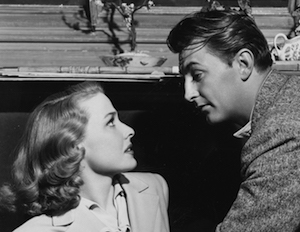
John Brahm’s neglected follow-up to his Gothic sensations The Lodger and Hangover Square is 200-proof film noir, choked to the brim with baroque deception, a torrent of psychological torment, and a flashback structure that makes Citizen Kane look like a piker. The Locket begins on the wedding day of Nancy Patton (Laraine Day) and John Willis (Gene Raymond), an occasion interrupted by the appearance of Nancy’s ex-husband, Dr. Blair (Brian Aherne), who warns of his former wife’s unstable past. Yet Dr. Blair’s story isn’t even primarily about their own failed marriage, but Nancy’s other previous relationship with bohemian painter Norman Clyde (Robert Mitchum), who noticed a streak of kleptomania that Nancy justifies on the basis of a primal childhood trauma. As the documentarian Errol Morris observes, “Temporal disorder triumphs. Flashbacks within flashbacks within flashbacks. Does the flashback provide an explanation for action or does it avoid an explanation of action? Here each revelation of the past renders the present more opaque.” Luckily, even as the story grows more obscure, the sense of craft is ever present and tightly controlled, with lovely cinematography from Nicholas Musuraca and a surprising turn from Mitchum, rising through the ranks of the studio and still molding his laconic persona in the wake of his first and only Oscar nomination for The Story of G.I. Joe. (KW)
Film Stock: AGFA B+W Acetate (year unknown)
85 min • RKO Radio Pictures • 35mm from Warner Bros., permission Swank
Short: The Twilight Zone: “A Nice Place to Visit” (John Brahm, 1960) – 25 min – 16mm
Wednesday, August 1 @ 7:30 PM / NEIU
THE WILD PARTY
Directed by Dorothy Arzner • 1929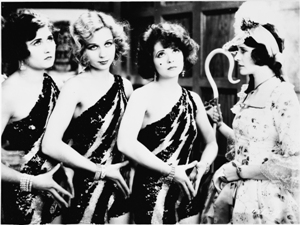
Clara Bow’s first talkie The Wild Party is best remembered as the film that brought Hollywood the boom mic: director Dorothy Arzner tied a microphone to a fishing pole to give Bow greater ease of movement on set. But this piece of technical innovation is far from the only reason The Wild Party is a remarkable film. As in Arzner’s other work (including Working Girls, which CFS screened last summer), it takes a standard flapper premise and turns it into something singular. Stella (Bow) is not only a party girl at Winston College for Women, she’s also an HBM (“hard-boiled maiden,” according to a sign Stella hangs in her room) that could give any modern HBIC a run for her money. That groups of men from the roadhouse to the frat house try to aggressively coerce Stella and her friends into sex feels unnervingly appropriate for 2018, just as Stella’s gutsy resistance to it feels like a refreshing cause for optimism. Meanwhile, though the plot is ostensibly about Stella’s budding romance with Professor Gil (Frederic March), the intimate body language and expressions of emotional commitment between Stella and her best friend Helen suggest which relationship is really most important. (JR)
77 min • Paramount Pictures • 35mm from Universal
Short: “Boys Will Be Boys” (George Stevens, 1932) – 20 min – 35mm
Saturday, August 4 @ 8 PM / Chicago Filmmakers
PEED INTO THE WIND
Directed by Curt McDowell • 1972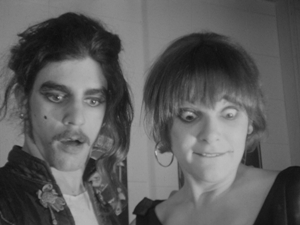
Unafraid to broach any taboo or flaunt any personal sexual proclivity, Curt McDowell’s cinema was dedicated to freeing the minds and bodies of the underground through stupid jokes and frank depictions of people fucking. Beginning his filmmaking career at the San Francisco Art Institute as a student (with benefits) of avant-garde legend George Kuchar, McDowell imported a great deal of his mentor’s camp sensibility into his own work but grounded the bad puns and flagrant melodramatics with a grungy sexual honesty that found liberation in exhibition. The first film of his to resemble something of a traditional narrative feature (he made the droning, abrasive Lunch for the hardcore market the same year), Peed Into the Wind stars McDowell himself as rock ’n’ roll hero Mick Terrific, an openly gay singer who nurses a shameful secret attraction to women. Absurdity abounds as McDowell proves there is no depth he won’t sink to for a laugh in his quest to put Mick through the sexual wringer. We’re proud to present the film George Kuchar likened to a “clogged toilet” and declared to have “the releasing power of an enema” in a beautiful new 16mm print, lovingly restored by the Academy Film Archive. (CW)
60 min. • 16mm from Canyon Cinema
Plus short films by Curt McDowell: “Kathleen Trailer (for Underground Cinema 12)” (1972, 1.5 min), “A Visit To Indiana” (1970, 10 min), “Truth For Ruth” (1972, 4 min), “Ronnie” (1972, 7 min) – 16mm
Tuesday, August 7 @ 7:30 PM / NEIU
UFORIA
Directed by John Binder • 1985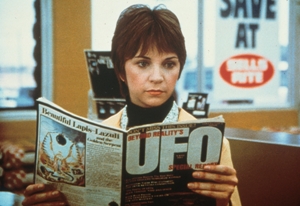
What to do with an imminently sweet, critic-pleasing romantic comedy about the love between a supermarket checkout lady and a Waylon Jennings lookalike that tackles belief in God and flying saucers with great care and sensitivity? Bury it, apparently. Despite strong notices from pretty much every critic who saw it in 1985 (including a four star rave from Roger Ebert), UFOria failed to make any waves upon release and its subsequent scarcity on home video has kept the film from the adoring public it so clearly deserves. A never-sexier Fred Ward stars as layabout small-time crook Sheldon, who falls head over heels for the deeply religious and UFObsessed Arlene (Cindy Williams) after she catches him shoplifting beer. The two end up in bed together pretty quickly and soon enough they’re playing house. When Arlene begins developing premonitions of a coming extraterrestrial visit, Sheldon is forced to contend with his own skepticism and the craven advances of a revival tent preacher (Harry Dean Stanton, well within his comfort zone) looking to exploit his paramour. Reminiscent of no less than Dreyer’s Ordet (or would that be UFOrdet?) in its unadorned view of the miracle of love, UFOria may not have set the world on fire upon initial release, but that won’t stop it from finding apostles one repertory screening at a time. (CW)
Film Stock: Kodak LPP (1984)
93 min. • Melvin Simons Productions • 35mm from Universal
Short: “The Divine Miracle” (Daina Krumins, 1973) – 6 min – 16mm from Canyon Cinema
Saturday, August 11 @ 11:30 AM / Music Box Theatre / Live Organ Accompaniment by Dennis Scott
THE BLUE BIRD
Directed by Maurice Tourneur • 1918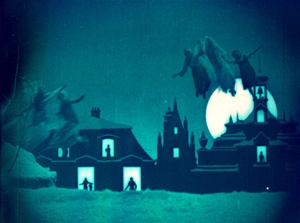
Nobel laureate Maurice Maeterlinck’s 1908 play The Blue Bird had already charmed audiences in Moscow, London, and New York by the time this magical adaptation reached the screen. The simple fairy tale of Mytyl and Tytyl, children who journey through enchanted lands in search of the Bluebird of Happiness, provided the ideal material for Maurice Tourneur, the French émigré who brought a wispy Pictorialist sensibility to the wilds of New Jersey. Aided immensely by the craftwork of Tourneur’s regular collaborators — the elaborate set design of Ben Carré, the expert trick photography of John van den Broek and Charles Van Enger — this delicate dream of a film excels in realizing the stranger aspects of Maeterlinck’s play with wide-eyed, guileless gusto: the spirits and fairies, the living souls of everyday objects like bread and milk, the Cathedral of Happiness, and more. The reviews were sensational, but The Blue Bird was roundly rejected by exhibitors as too arty for its own good. Seen now in a tinted preservation print, The Blue Bird fully earns the hyperbole of Photoplay a century ago: “It is so beautiful from beginning to end that it fairly stings the senses, awakening in the spectator esthetic emotions so long dormant, so seldom exercised, that the flashing light of the awakening is almost a surfeit of joy.” (KW)
80 min • Artcraft Pictures Corporation • 35mm from George Eastman Museum
Short: “Voice of the Nightingale” (Wladyslaw Starewicz, 1925) – 13 min – 16mm
Monday, August 13 @ 7:00 PM / Music Box Theatre
GREEN SNAKE
Directed by Tsui Hark • 1993
In Cantonese with English subtitles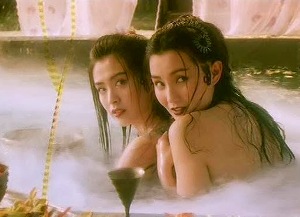
Hong Kong pop cinema wasn’t exactly sober or sedate before the arrival of Tsui Hark, but once the master of renegade Cantonese genre fare hit the scene in the late ’70s, things got decidedly wilder and weirder. Tsui was 14 years and 22 films deep into his career as a director and had moved from punk rock outsider to studio mogul when he made his revisionist wuxia masterpiece Green Snake, a film that married the surface appeal of a special effects-heavy martial arts blowout with a colorful, hyperactive style and subversive sense of humor reminiscent of Frank Tashlin played at centuple speed. An update of the undying folk tale Madame White Snake, Green Snake features Hong Kong superstars Maggie Cheung and Joey Wong as a pair of sororal snake spirits hunted by a puritanical Buddhist monk after taking human form. Wong’s White Snake, whose human existence is validated by romantic love and motherhood, may have been the focus of the original story, but Tsui’s film is equally concerned with Cheung’s Green Snake, a character more comfortable eating rats and slithering through the marshes abutting her palatial estate than living among people. Tsui’s apparent working maxim of “more is more” pays off in spades here, as every overindulgent camera tilt and oversized snake prosthetic serve to push this outrightly ridiculous pulp concoction ever closer to the sublime. (CW)
99 min. • Film Workshop • 35mm from the Academy Film Archive
Preceded by: ’90s Hong Kong Trailer Reel
Wednesday, August 15 @ 7:30 PM / NEIU
THE PLASTIC DOME OF NORMA JEAN
Directed by Juleen Compton • 1966
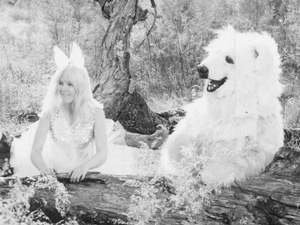 One of the strangest independent features of the 1960s, The Plastic Dome of Norma Jean plays like a sun-bleached, bubblegum messiah variant on A Hard Day’s Night or perhaps a Roger Corman AIP youthpic remake of Corn’s-A-Poppin’. Teenage clairvoyant/divining rod/beat poet Norma Jean (Sharon Henesy) and her boyfriend (Robert Gentry) order a plastic dome from a catalog, but before they can even unload the crate, their Ozark hoedown is spoiled by the appearance of a huckster boy band (whose members include a 25-year-old Sam Waterston!). The rock ’n’ roll mop tops co-opt the dome and try to turn it into a tent revival scam, an effort made easier when the mayor of Cablerock, Missouri, gets involved and springs for some spotlights. Norma runs away and takes refuge in an abandoned school bus at the town dump, where she meets a happy hobo and his beloved rabbit. Though comparatively obscure in film circles, Juleen Compton was a prominent member of the New York theater scene — a protégé of Clifford Odets and Lee Strasberg, the wife of Harold Clurman, and later the director of the Century Center for the Performing Arts. Compton self-financed Plastic Dome and its predecessor, Stranded, her career in real estate and interior design, but never managed to break Hollywood’s glass ceiling. Restored by UCLA Film & Television Archive with funding provided by Century Arts Foundation. (KW)
One of the strangest independent features of the 1960s, The Plastic Dome of Norma Jean plays like a sun-bleached, bubblegum messiah variant on A Hard Day’s Night or perhaps a Roger Corman AIP youthpic remake of Corn’s-A-Poppin’. Teenage clairvoyant/divining rod/beat poet Norma Jean (Sharon Henesy) and her boyfriend (Robert Gentry) order a plastic dome from a catalog, but before they can even unload the crate, their Ozark hoedown is spoiled by the appearance of a huckster boy band (whose members include a 25-year-old Sam Waterston!). The rock ’n’ roll mop tops co-opt the dome and try to turn it into a tent revival scam, an effort made easier when the mayor of Cablerock, Missouri, gets involved and springs for some spotlights. Norma runs away and takes refuge in an abandoned school bus at the town dump, where she meets a happy hobo and his beloved rabbit. Though comparatively obscure in film circles, Juleen Compton was a prominent member of the New York theater scene — a protégé of Clifford Odets and Lee Strasberg, the wife of Harold Clurman, and later the director of the Century Center for the Performing Arts. Compton self-financed Plastic Dome and its predecessor, Stranded, her career in real estate and interior design, but never managed to break Hollywood’s glass ceiling. Restored by UCLA Film & Television Archive with funding provided by Century Arts Foundation. (KW)
Film Stock: Kodak B+W (2016)
82 min • Compton Films • 35mm from UCLA Film & Television Archives
Short: “Scarface and Aphrodite” (Vernon Zimmerman, 1963) – 15 min – 16mm from Film-makers Coop
Short Film Stock: Kodak B+W (2008)
Wednesday, August 22 @ 7:30 PM / NEIU
AFTERGLOW
Directed by Alan Rudolph • 1997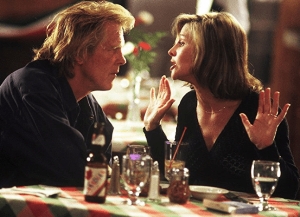
While CFS maintains this program is firmly not nostalgic, we can still get a little sad thinking about long-gone Chicago venues where a Sony Pictures Classics release like Afterglow might have screened. (It’s been so long, SPC doesn’t even own the copyright anymore.) Here in 2018, Robert Altman protégé Alan Rudolph’s affectionate portrait of two couples’ dysfunctional marriages feels like it’s from a different planet entirely. A former B-movie actress (Julie Christie, who was nominated for an Academy Award for her performance) and a splendiferously greasy handyman named Lucky Mann (Nick Nolte), have been married for years, but have slowly drifted apart. In a futuristic yuppie condo a few kilometers away, Lara Flynn Boyle tries to convince her petulant stuffed-shirt husband Jonny Lee Miller to have a baby, and hires Nolte to build the nursery. Inevitably, Nolte and Boyle get in the tub together, and the rest is history. Asked if Afterglow was a romantic comedy, Rudolph answered: “It’s more of an unwashed soap opera. Or a serious farce. The whole film is designed to be simultaneously humorous and serious, familiar and strange. Just like real life.” (JA)
119 min • Sandcastle 5 Productions • 35mm from Chicago Film Society Collections, permission Moonstone
Short: The Three Stooges in “Corny Casanovas” (Jules White, 1952) – 16 min – 16 mm
Wednesday, August 29 @ 7:30 PM / NEIU
LADY IN THE DARK
Directed by Mitchell Leisen • 1944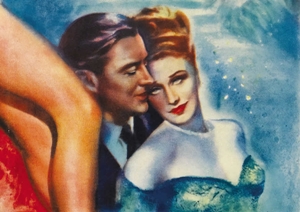
While the movies and Freud ascended roughly in parallel and often worked towards similar ends (they don’t call Hollywood “the dream factory” for nothing), rare has been the picture that takes psychoanalysis as its outright guiding principle, and rarer still is the one that attempts to envision the process as a series of glossy Technicolor production numbers. Lady in the Dark, CFS favorite Mitchell Leisen’s unmusical of the unheimlich, presented an opportunity for Hollywood to grapple with the burgeoning influence of Freud in the cultural sphere by dressing up all the symbology mumbo jumbo with beautiful gowns, saccharine string accompaniment, several tons of dry ice, and more color gels than a Dario Argento picture. Ginger Rogers stars as the buttoned-down editor of a successful fashion magazine who visits a headshrinker after a series of crippling migraines and troubling dreams have her questioning the direction of her career and love life. Using each session as an opportunity to stage increasingly elaborate dream sequences-cum-off kilter musical numbers (including one circus-themed showstopper featuring humanoid rabbits, a singing elephant, and an audience of oversized eggs), Lady in the Dark may not present a particularly cogent perspective on the pitfalls awaiting the modern career woman but it does find great attraction and meaning in the spectacle of the inexplicable. (CW)
Film Stock: Kodak LPP (1984)
100 min. • Paramount Pictures • 35mm from Universal
Cartoon: “Book Revue” (Robert Clampett, 1945) – 7 min – 16mm
Special Thanks: Shayne Pepper, Michael Hines, Kyle Burke, Cyndi Moran, Robert Ritsema, Ernie Kimlin, Chris Rodriguez, Tom Scanlon, & Asher Waldron of Northeastern Illinois University; Brian Andreotti & Ryan Oestreich of the Music Box Theatre; Brenda Webb, Ana Wright, & Patrick Friel of Chicago Filmmakers; Randy Andrews of Swank Motion Pictures; David Antos & Chris Omiotek; Brian Belovarac & Ben Crossley-Marra of Janus Films; Helge Bernhardt; Daniel Bish & Nancy Kauffman of George Eastman Museum; Cassie Blake, May Haduong, Mark Toscano, & Charles Rogers of the Academy Film Archive; James Bond of Full Aperture Systems; Antonella Bonfanti of Canyon Cinema; Liam Berney, Dennis Chong, Jesse Chow, & Eric Chin of Universal; Chris Chouinard of Park Circus; Neil Cooper; Masaki Daibo of the National Film Center, Tokyo; Steve Darnall; Justin Dean; Justin Dennis of Kinora; Amanda El-Khoury & Chaclyn Hunt; Bill Francik; Katherine Greenleaf; Amy Heller & Dennis Doros of Milestone Films; David Jennings of Sony Pictures Repertory; Dave Kenig of Panavision; John Klacsmann of Anthology Film Archives; James Layton of the Museum of Modern Art; Steven Lloyd; Steven Lucy; Julie McLean; Anita Monga, Rob Byrne, & Becky Mertens of the San Francisco Silent Film Festival; Bradley Morgan of CHIRP Radio 107.1 FM; Bob Morrissey; Kristie Nakamura & Nicole Woods of Warner Bros. Classics; Hisashi Okajima of the National Film Archive of Japan; Frank Partipilo; Steve Prokopy of Chicago Critics Film Festival; Mike Quintero; Neal Sabin; Dennis Scott; Lynanne Schweighofer, Rob Stone, & Mike Mashon of the Library of Congress; M.M. Serra of Film-makers Coop; Tommy Jose Stathes; Etchie Stroh of Moonstone; Quentin Tarantino; Kiyan Warner; Nancy Watrous, Brian Belak, & Michelle Puetz of Chicago Film Archives; and Todd Wiener & Steven K. Hill of UCLA Film & Television Archive
And extra special thanks to our audience, who make it all possible!
